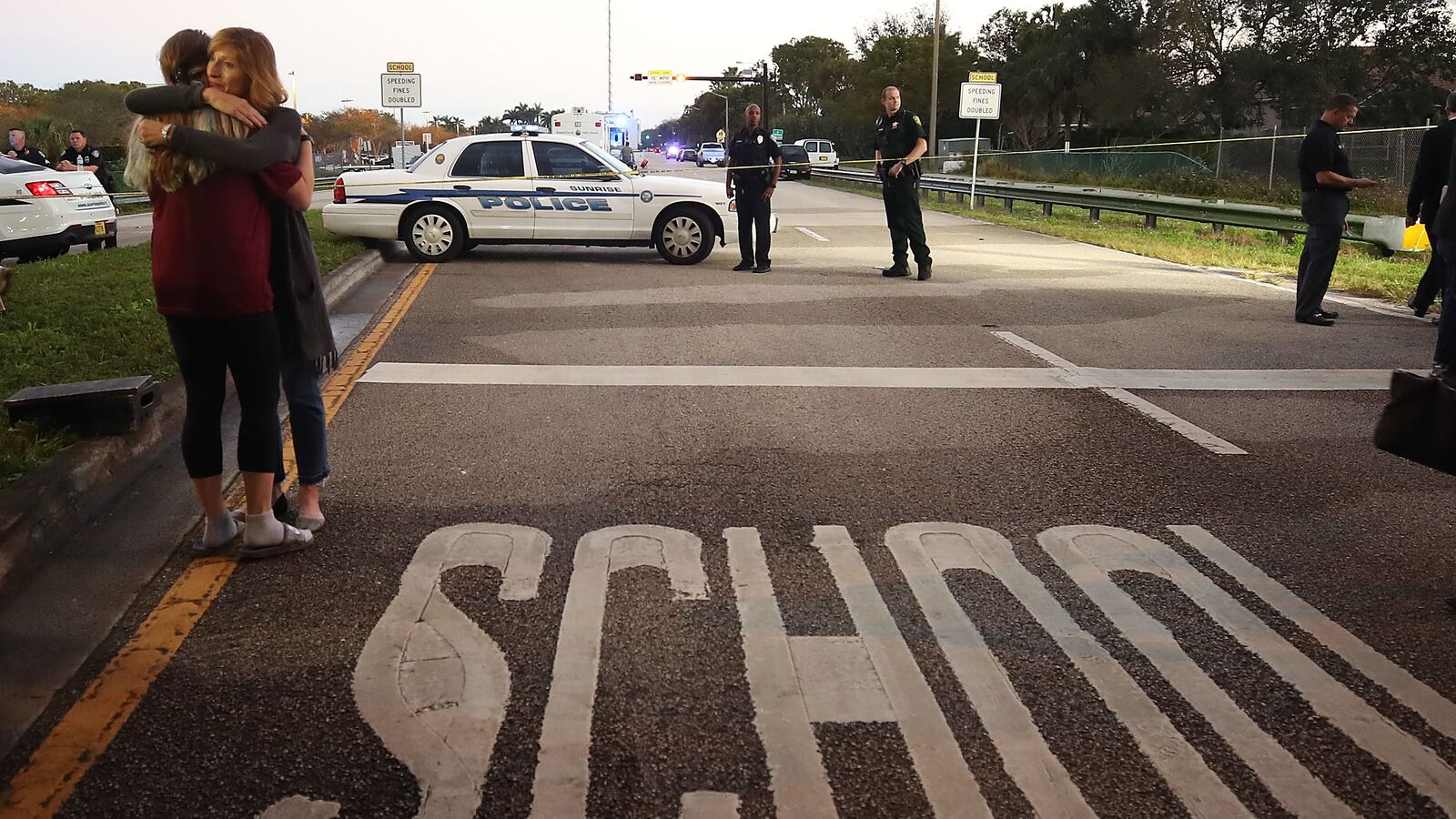It’s hard to know where to start on days like this.
The shooting at Marjory Stoneman Douglas High School in Parkland, Florida, that left 17 people dead on Wednesday has elicited both terror and anger — and raised debates that are far from settled about how to keep American students safe.
Here are a few storylines we noticed as the country again grapples with a tragic school shooting:
1. You’re not wrong to think it: There have been a lot of mass shootings, and many recent ones have been especially deadly.
Data on school shootings specifically, though, is notoriously murky. As the Atlantic recently noted, varying definitions can contribute to either “sensationalizing or oversimplifying a modern trend of mass violence in America that is seemingly becoming more entrenched.”
But by NBC News’ count, 20 people have been killed and more than 30 have been injured in school shootings this year. That’s a lot — and more news organizations are now trying to keep a careful tally.
2. The consequences of traumatic events like the shooting at Stoneman Douglas are likely to be felt for some time.
A number of studies have found that violent and traumatic events in and outside of school do real damage to student learning, as we’ve reported — particularly among students who are already struggling. Here are some resources for teachers who need to talk to their students about trauma.
3. The tragedy is already renewing debates over whether or how to arm teachers.
Education Week gathered some of those calls from politicians Thursday. “Gun-safety advocates say that teachers can’t safely and quickly move from the mindset of teaching to being asked to fire a gun at an active shooter,” the story also notes.
This doesn’t even get at the debate about whether anyone should have access to the kind of gun the shooter used. Students from the district, for their part, told Broward schools chief Robert Runcie Thursday “that the time is due for a conversation on sensible gun control,” the Miami Herald reported.
Whether other technology and infrastructure can help keep students safe is a topic of ongoing discussion in communities across the country. Colorado lawmakers are considering a bill to help schools buy communications systems that would allow them to talk directly to police and other emergency responders. Officials from districts that already use this equipment described them as a way to increase safety without “turning our schools into prisons,” even as they also assured lawmakers that the radios were just as useful for serious playground injuries and broken-down buses as for the much rarer active shooter situations.
In Tennessee, one school district near Nashville announced plans to close schools next Monday to review all safety plans with school staff and local law enforcement.
4. In some places, the shooting is unlikely to change the school safety debate at all.
In New York City, for example, conversations about school safety in recent years have revolved around discipline policies and metal detectors (though police have seized an increasing number of weapons from city schools). There’s little appetite there to arm teachers.
5. But all across America, the shooting and others like it have added a frightening tone to what it means to teach and learn in schools today.
“I know you are waking up this morning to a nightmare,” a former educator wrote in a “love letters to teachers” on Teaching Tolerance. “I know you are frustrated, tired and weary of the news. I know you are wearing your coat of bravery today.”
“I’m so, so angry and I’m having a hard time today looking at my students and not thinking about what happens when it’s my school’s turn,” wrote one commenter on the Badass Teachers Association Facebook group.


